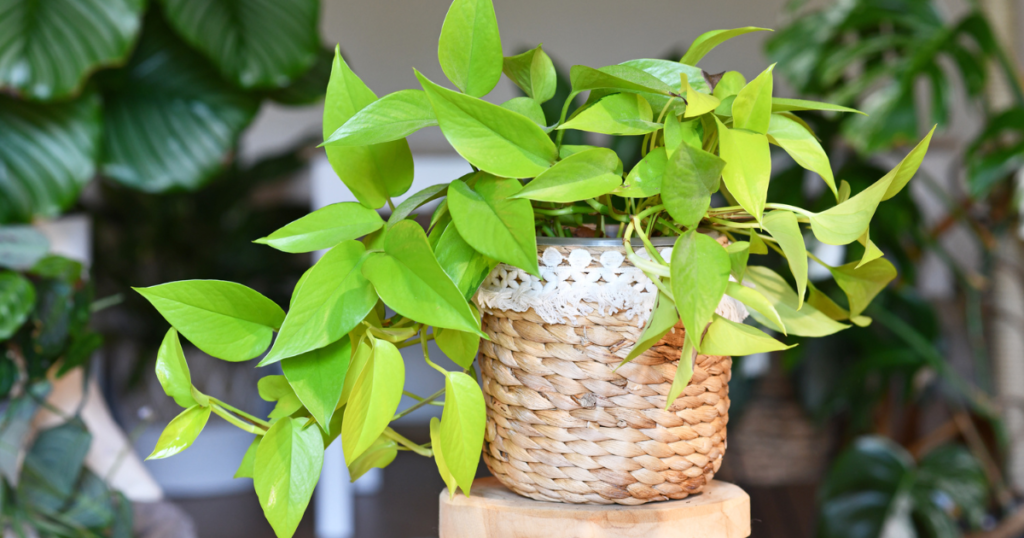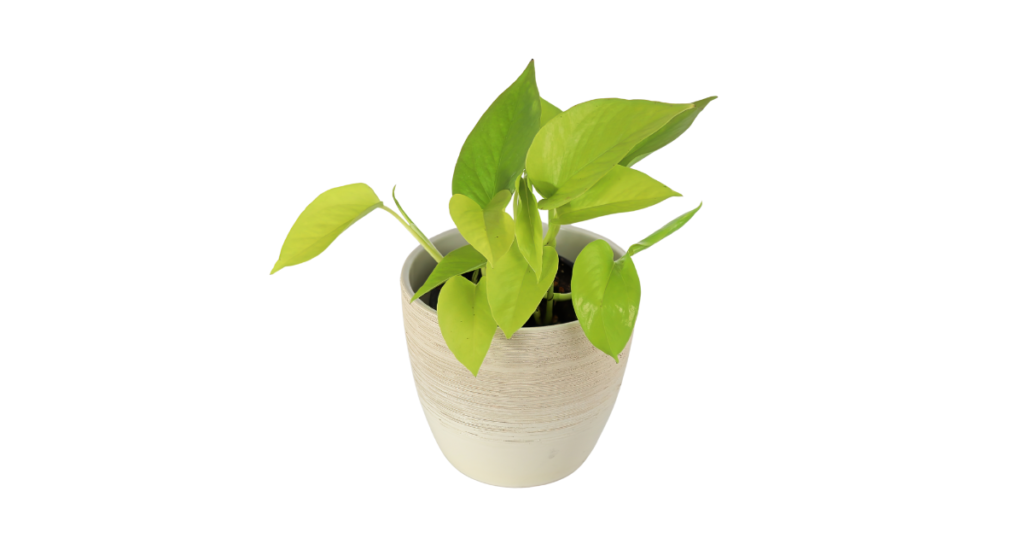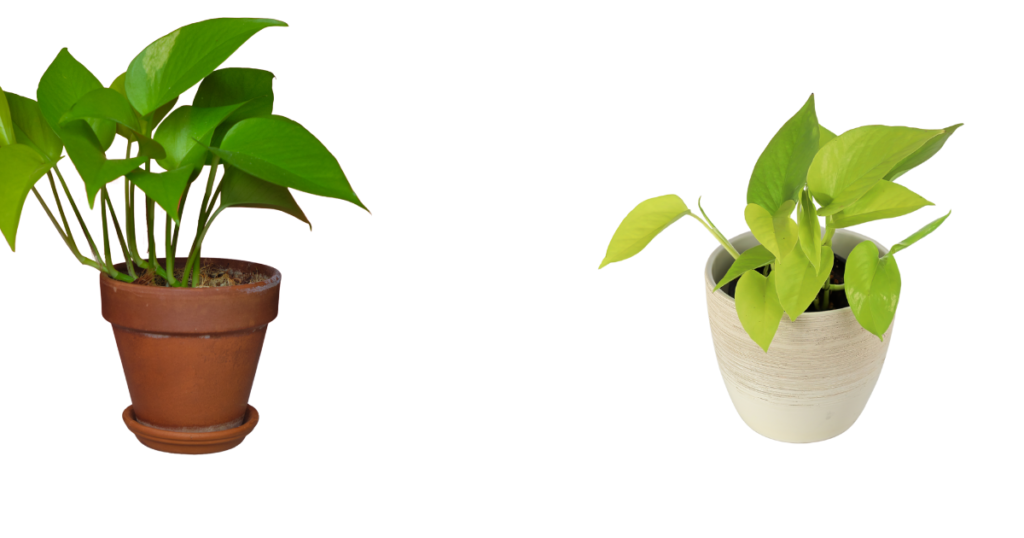Indoor plants have become cherished companions, transforming homes into lush sanctuaries. Amid the myriad choices, the Neon Pothos and Lemon Lime Philodendron stand out as vibrant contenders. These green beauties not only add aesthetic appeal but also contribute to a healthier living environment. In this exploration, we delve into the distinct characteristics, care requirements, and visual allure of Neon Pothos and Lemon Lime Philodendron, guiding you through the delightful world of indoor gardening. Discover the unique charm each plant brings and embark on a journey to elevate your living space with the vibrant hues of nature.
Among the myriad choices available, two contenders stand out: the Lemon Lime Philodendron and the Neon Pothos. Let’s dive into the world of these green beauties and explore what makes each one unique.
Is Neon Pothos the Same as Lemon Lime Philodendron?
Despite their similarities, Neon Pothos (Epipremnum aureum ‘Neon’) and Lemon Lime Philodendron (Philodendron hederaceum ‘Lemon Lime’) are distinct plant species. Neon Pothos features neon-green leaves with marbled patterns, while Lemon Lime Philodendron boasts heart-shaped leaves in vibrant green and yellow hues. Both are trailing plants, but their unique colors and leaf shapes set them apart, making each a distinctive addition to your indoor garden.
How Can You Tell Neon Pothos?
Identifying a Neon Pothos is relatively easy. Look for vibrant neon-green leaves with distinct marbled patterns. The leaves are heart-shaped and have a trailing growth habit. Neon Pothos often displays a robust and lush appearance, making it a visually appealing choice for indoor plant enthusiasts.
Does Lemon Lime Philodendron Grow Fast?
Yes, the Lemon Lime Philodendron is known for its relatively fast growth when provided with the right conditions. In optimal environments with bright, indirect light and well-draining soil, this philodendron can produce new leaves regularly, creating a bushy and attractive appearance. Regular pruning can help control its size and shape, but its rapid growth is one of the reasons it’s a popular choice for indoor greenery enthusiasts.
Read More Post: Philodendron Lemon Lime: A Guide to Care and Cultivation 2023
About Lemon Lime Philodendron: A Closer Look

The Lemon Lime Philodendron, scientifically known as Philodendron hederaceum ‘Lemon Lime,’ is renowned for its heart-shaped leaves in shades of vibrant green and yellow. Its compact size and trailing vines make it a versatile choice for both hanging baskets and tabletop displays.
The Lemon Lime Philodendron, scientifically known as Philodendron hederaceum ‘Lemon Lime,’ is a captivating specimen that enchants indoor gardening enthusiasts with its distinctive features. Renowned for its heart-shaped leaves, this philodendron stands out for its fascinating blend of vibrant green and yellow hues, creating a visually striking appearance.
Characteristics and Features
Its compact size and trailing vines make it a versatile choice, equally suitable for hanging baskets or tabletop displays. The unique coloration of the leaves adds a touch of warmth and sophistication to any indoor setting, making it a popular choice for those seeking to infuse their spaces with natural beauty.
Thriving in moderate to bright indirect light, the Lemon Lime Philodendron adapts well to various environments. Its ideal growing conditions include well-draining soil, and maintaining a consistent watering schedule is crucial. Allowing the top inch of soil to dry out between waterings helps prevent overwatering, a key consideration in the plant’s care routine.
Maintenance is relatively straightforward, with regular pruning recommended to maintain the plant’s shape and encourage bushier growth. Wiping the leaves with a damp cloth not only keeps them dust-free but also promotes optimal photosynthesis, ensuring the plant’s continued health and vibrancy.
The Lemon Lime Philodendron’s allure extends beyond its aesthetics, as it also possesses air-purifying qualities, contributing to a healthier indoor environment. As a resilient and adaptable plant, it fits seamlessly into various decor styles, offering plant enthusiasts an opportunity to express their creativity in interior design.
About Neon Pothos: Exploring the Allure

Neon Pothos, scientifically named Epipremnum aureum ‘Neon,’ is a captivating and low-maintenance indoor plant that weaves an enchanting tapestry of greenery in homes. Known for its distinctive neon-green leaves adorned with splashes of yellow, this pothos variety is a visual delight, injecting vibrant energy into any living space.
One of Neon Pothos’s most alluring features is its unique appearance. The heart-shaped leaves, resplendent in neon hues, exhibit marbled patterns that create a striking visual impact. This plant’s aesthetic versatility makes it an ideal choice for those seeking a playful and dynamic element in their indoor garden.
Thriving in various lighting conditions, Neon Pothos is celebrated for its adaptability. While it can tolerate low light, providing bright, indirect light enhances its vibrancy. Planted in well-draining soil, this pothos variety requires watering when the top inch of soil feels dry, contributing to its reputation as a low-maintenance green companion.
Care for Neon
Care for Neon Pothos is remarkably straightforward. Regular pruning helps maintain a compact shape, and promptly removing any yellowing leaves ensures the plant’s continued health. With its trailing growth habit, Neon Pothos can be elegantly displayed in hanging baskets or showcased on shelves, allowing its vibrant foliage to cascade gracefully.
The allure of Neon Pothos extends beyond its visual appeal. Resilient and adaptable, it serves as an excellent choice for both beginners and experienced plant enthusiasts. Its ability to purify indoor air adds a functional dimension to its charm, contributing to a healthier living environment.
In the world of indoor plants, Neon Pothos stands out as a beacon of lively beauty and simplicity. Its low-maintenance nature, vibrant colors, and air-purifying qualities make it an excellent choice for those seeking a lively companion to enhance their living spaces.
Differences Between Lemon Lime Philodendron and Neon Pothos

Indoor gardening enthusiasts often find themselves faced with the delightful dilemma of choosing between the Lemon Lime Philodendron and Neon Pothos. While these plants share specific characteristics, they exhibit distinct differences in various aspects.
- Leaf Colors and Patterns:
- Lemon Lime Philodendron: Known for its heart-shaped leaves, this philodendron boasts a captivating blend of vibrant green and yellow hues, creating a warm and sophisticated appearance.
- Neon Pothos: Characterized by neon-green leaves with splashes of yellow and marbled patterns, the Neon Pothos offers a playful and vibrant aesthetic.
- Growth Habit:
- Lemon Lime Philodendron: Typically exhibits a more compact growth habit with trailing vines, making it suitable for both hanging baskets and tabletop displays.
- Neon Pothos: Features a trailing growth habit as well, allowing it to gracefully cascade from hanging baskets or shelves, creating an elegant display.
- Lighting Preferences:
- Lemon Lime Philodendron: Thrives in moderate to bright indirect light, tolerating some direct sunlight. Ideal for spaces with ample natural light.
- Neon Pothos: Adaptable to various lighting conditions, including low light. Flourishes in bright, indirect light but can tolerate lower light levels.
- Soil Preferences:
- Lemon Lime Philodendron: Flourishes in well-draining soil with organic matter. Requires aeration for optimal growth.
- Neon Pothos: Thrives in a standard potting mix with good drainage. Well-draining soil is essential to prevent water stagnation.
- Leaf Shape and Size:
- Lemon Lime Philodendron: Features heart-shaped leaves with a glossy texture. The leaves are relatively uniform in size.
- Neon Pothos: Exhibits heart-shaped leaves with a slightly elongated appearance. Leaves may vary in size, adding to the dynamic visual appeal
Visual Appeal in Different Settings:
- Lemon Lime Philodendron: Adds warmth and sophistication to indoor spaces, complementing various decor styles.
- Neon Pothos: Injects a playful and vibrant energy, making it a striking focal point in more eclectic or lively interior settings.
- Maintenance Requirements:
- Lemon Lime Philodendron: Requires consistent watering, allowing the top inch of soil to dry out between waterings. Regular pruning maintains shape and encourages bushier growth.
- Neon Pothos: Low maintenance, with watering needed when the top inch of soil feels dry. Regular pruning helps control its trailing growth.
- Air-Purifying Qualities:
- Lemon Lime Philodendron: Known for its air-purifying qualities, contributing to a healthier indoor environment.
- Neon Pothos Also possesses air-purifying properties, enhancing the overall air quality in its surroundings.
Similarities Between Lemon Lime Philodendron and Neon Pothos
As captivating indoor plants, the Lemon Lime Philodendron and Neon Pothos share several similarities that make them popular choices among plant enthusiasts. These commonalities contribute to their widespread appeal and ease of care.
- Family and Genus:
- Lemon Lime Philodendron: Belongs to the Araceae family and Philodendron genus.
- Neon Pothos Also falls within the Araceae family and Epipremnum genus.
- Trailing Growth Habit:
- Both plants exhibit a trailing growth habit, making them well-suited for hanging baskets, shelves, or elevated displays.
- Heart-Shaped Leaves:
- Both species feature heart-shaped leaves, adding a touch of natural charm and aesthetic elegance to indoor spaces.
- Versatility in Display:
- Whether placed in hanging baskets or decorative pots, both the Lemon Lime Philodendron and Neon Pothos can enhance various interior settings.
- Adaptability to Indoor Environments:
- Thriving as indoor plants, they adapt well to the controlled conditions of homes, making them accessible choices for indoor gardening.
- Air-Purifying Qualities:
- Both plants are recognized for their air-purifying qualities, contributing to improved indoor air quality by filtering out pollutants.
- Low-Maintenance Requirements:
- Known for their low-maintenance nature, both the Lemon Lime Philodendron and Neon Pothos are suitable for plant enthusiasts with varying levels of experience.
- Propagation Methods:
- Both plants can be easily propagated through stem cuttings, allowing enthusiasts to expand their collection or share these green companions with others.
- Resilience:
- Resilient by nature, the Lemon Lime Philodendron and Neon Pothos can withstand occasional neglect and adapt to fluctuations in watering or light conditions.
- Indoor Decor Enhancement:
- Whether chosen for their vibrant greenery or dynamic color patterns, both plants enhance indoor decor, providing a refreshing and natural aesthetic.
- Suitability for Beginners:
- Both the Lemon Lime Philodendron and Neon Pothos are popular choices for beginners in the realm of indoor gardening due to their forgiving nature and straightforward care requirements.
Conclusion
Indulging in the debate of Lemon Lime Philodendron vs. Neon Pothos unveils a fascinating journey into the world of indoor greenery. Both plants boast distinctive features, from their aesthetic charm to individual care requirements. While the Lemon Lime Philodendron captivates with its vibrant foliage, the Neon Pothos shines with its hardiness and adaptability. So, which one will find a new home in your living room? The decision is yours, guided by the unique allure each plant brings to your sanctuary.
FAQs
Which plant is better for low-light conditions, Lemon Lime Philodendron or Neon Pothos?
Both plants can tolerate low-light conditions, but Neon Pothos is more adaptable to lower-light levels.
How often should I water my Lemon Lime Philodendron and Neon Pothos?
Water when the top inch of soil feels dry, but adjust the frequency based on the specific needs of each plant.
Can I place these plants in direct sunlight?
While both plants can tolerate some direct sunlight, it’s best to provide bright, indirect light to prevent leaf burn.
What should I do if my plant is infested with pests?
Use natural remedies like neem oil or insecticidal soap to control pests without harming the plants.
Where can I get these plants?
Local nurseries, garden centers, and online plant shops are excellent sources for acquiring Lemon Lime Philodendron and Neon Pothos.







